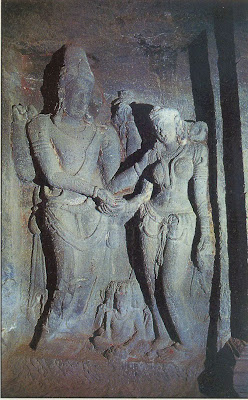The largest Sri Maha Vishnu Temple in the world

Angkor Wat (Cambodia) is not only the largest Hindu Temple, but also one of the wonders of the word. Yet, unknown to many Hindus all around! An architectural marvel and a piece of world heritage. Indians know more about Taj Mahal and almost nothing about this temple at Angkor Wat. Religion apart, this beautiful temple and it's intricate architectural wonder that signifies a symbol of Science and Mathematics in ancient times. There might not have been any Civil Engineering at that time, but even today the Engineers of Modern days, will have to bet their heads to recreate something like this. Likewise, there are many wonders which people do not know about. We are lost in Eiffel Tower and things like Egyptian Pyramids, but there are lot more of Indian marvels and structures, in other places - why, even in China, Japan & Singapore also!
Angkor Wat (or Angkor Vat) is a temple at Angkor, Cambodia, built for king Suryavarman II in the early 12Th century as his state temple and capital city. The largest and best-preserved temple at Angkor, it is the only one to have remained a significant religious centre- first Hindu, then Buddhist- since its foundation. The temple is the epitome of the high classical style of Khmer architecture. It has become a symbol of Cambodia, appearing on its national flag, and it is the country's prime attraction for visitors drawn by its architecture, its extensive bas-reliefs and the numerous devatas adorning its walls.
History
The initial design and construction of the temple took place in the first half of the 12Th century, during the reign of Suryavarman II (ruled 1113-c. 1150). Dedicated to Lord Sri Maha Vishnu, it was built as the king's state temple and capital city, with the royal palace located between the temple and the north gate, and the city filling the remainder of the outer enclosure. In the 14Th or 15Th century the temple was converted to Theravada Buddhist use, which continues to the present day. Unusually among Angkor's temples, although Angkor Wat was somewhat neglected after the 16Th century and required considerable restoration in the 20Th century, it was never completely abandoned. Its moat also provided some protection from encroachment by the jungle. During this period the temple was known as Preah Pisnulok, after the posthumous title of Suryavarman. The temple's modern name means "City Temple": Angkor is a vernacular form of the word nokor which comes from the Sanskrit word nagara (capital), while wat is the Khmer word for temple.Conservation efforts at the temple continue, notably the German Apsara Conservation Project (GACP), which endeavors to protect the devatas (or apsaras) and other bas-reliefs which decorate the temple from damage. The organization's survey found that around 20% of the devatas were in very poor condition, mainly because of natural erosion and deterioration of the stone.
The following Pictures & Photographs shows the main entrance to the Angkor Wat temple proper, seen from the eastern end of the Naga causeway; outside walls of Angkor Wat, main entrance and stretch of water; Angkor Wat, One of the rare surviving statues, the statue of the god Vishnu with 8 arms. An 1866 photograph of Angkor Wat by Emile Gsell.
These images were sent to me by Sri Ranganathan, from Hyderabad. Since these images surely represents the Hindu & Srivaishnava culture, I reproduce the same for the readers to take a tour!

Comments